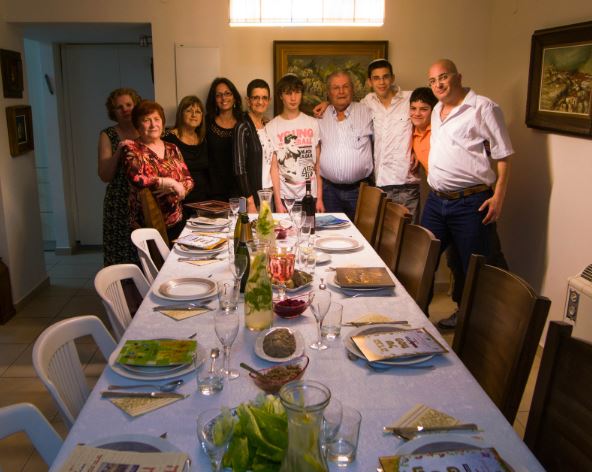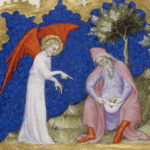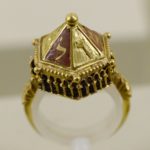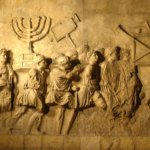Passover is the ritual retelling of the exodus, the flight of the Jewish slaves from Egypt roughly 5,000 years ago. It is a story rich in symbolism and long on empathy – each participant at the Seder table is asked to imagine themselves as one of the slaves who was freed from bondage.
But it’s more than an encounter group with our ancestors. It is a time for looking at our own lives in a new light, rediscovering our cultural roots and seeing the ways that we remain slaves – to intolerance, to material things, even to traditions that we perform out of duty rather than to revitalize our spirits. The phrase “Next year in Jerusalem,” uttered longingly and optimistically during the Passover service, isn’t from a travel brochure; it is a metaphor for returning to the very fount of Jewish life.
Humility – An essential part of the Jewish character
The phrase “dayenu” or “it would have been enough for us” is the chorus to a Passover song that lays out the multiple miracles God performed for the Jews during the exodus. Those miracles ranged from punishing the Egyptians (with a series of plagues leading up to the smiting of the first-born), destroying their gods and drowning their armies in the Red Sea to providing manna in the desert, giving the Jews the Ten Commandments and building the First Holy Temple when they reached the promised land of Israel. The chorus reminds us that a Jew’s faith in God hinges on what God does for us, not promises based on our desires. For a Jew to become impatient with God’s plan, to expect liberation in one fell swoop, is to misunderstand the nature of spirituality.
The Story of Passover
This is how the story of Passover gained its wonderful mix of allegory and instruction; each part of the story (and the ritual of the Seder) is based on the step-by-step liberation of the Jews from Egypt. Even the Four Questions, a sort of FAQ about certain Passover traditions such as eating matzohs and reclining in our seats at the table, and the story of the Four Sons, a portion of the service devoted to addressing the curiosity of a symbolic cross-section of contemporary Jewry – the wise son, the wicked son, the simple son and the son who “wits not to ask” – seem to be more about pedagogy than false piety.
And the list goes on:
The term Passover refers to the act of God “passing over” the Jews’ houses on the night of the smiting of Egypt’s firstborn. (The Jews knew to mark their doors with lamb’s blood so God would know which houses were to be left alone.)
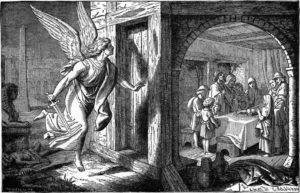 Matzohs, the flat, unleavened crackers eaten during Passover – any and all yeast-activated bread are thrown away for the week of Passover – is a recreation of the only food the Jews had time to prepare before they fled. Other foods served during the Seder have their own lineage and symbolism – such as maror (usually horseradish, which represents the bitterness of slavery), charoset (usually a sweet nut-and-apple mixture that reminds the Jews of the mortar used in Egyptian buildings) and karpas (parsley or celery dipped in saltwater, the symbolic tears of the Jewish slaves).
Matzohs, the flat, unleavened crackers eaten during Passover – any and all yeast-activated bread are thrown away for the week of Passover – is a recreation of the only food the Jews had time to prepare before they fled. Other foods served during the Seder have their own lineage and symbolism – such as maror (usually horseradish, which represents the bitterness of slavery), charoset (usually a sweet nut-and-apple mixture that reminds the Jews of the mortar used in Egyptian buildings) and karpas (parsley or celery dipped in saltwater, the symbolic tears of the Jewish slaves).
And the eight-day length of the holiday, always celebrated in the spring, represents the week between the beginning of the exodus and the parting of the Red Sea. (Actually, in Israel, the holiday only lasts seven days; according to some Jewish scholars, the extra day is so the Jews of the Diaspora, Jews who do not live in Israel, can make sure they celebrate the holiday on a proper day.)
But these details of the Passover service are better described, at length, elsewhere. What is, perhaps, more important is the powerful legacy of the story of Passover. To accept it is to accept a fundamental idea about being a Jew: that God is not only just but vengeful, as well. It’s to believe that liberation is possible and that those who persecute will be punished. It’s to believe that actions have consequences and that, for Jews, freedom is a delicate balance between faith and self-determination.

